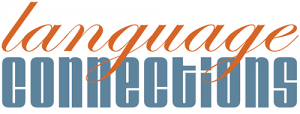The initial interaction between a consumer and a product frequently occurs through its description. An accurate product description translation not only conveys essential information but also builds trust and drives purchasing decisions. According to a study by CSA Research, 75% of consumers prefer to buy products in their native language, and 60% rarely or never purchase from English-only websites.
The important points of product description translation
Clarity
Quality translation requires a deep understanding of the product, the target audience, and the cultural nuances that influence purchasing behavior. For instance, product manual translations must ensure that technical terms are accurately conveyed to prevent misuse or misunderstandings. Product manual translation should also maintain consistency in terminology to uphold brand integrity across different markets. Moreover, clear and precise translations can significantly reduce customer support queries. A study by Milestone Localization found that well translated manuals lead to fewer product returns and a stronger brand image
Localization
Localization is the process of adapting content to meet the cultural, linguistic and regulatory requirements of a specific region. This includes adjusting units of measurement, currency formats and even color schemes to align with local preferences. For example, product label translation must consider local regulations and cultural sensitivities to ensure compliance and appeal. Translation product packaging should resonate with local consumers, considering regional aesthetics and language nuances.
Consistency
Maintaining consistency in translations across all platforms is crucial for brand recognition and customer trust. Inconsistent terminology or tone can confuse consumers and dilute brand identity. Utilizing professional packaging translation services ensures that all product related content aligns with the brand’s voice and meets the expectations of the target audience.
Mistakes in product description translation
Inaccurate translations can lead to misunderstandings, legal issues and damage brand reputation. A notable example is the case of the Iranian product labels analyzed in a study by Eftekhar and Nouraey (2013). The study found numerous errors in English translations of Iranian product labels, including grammatical mistakes and misinterpretations, which could mislead consumers and harm the product’s credibility.
Another example involves a U.S. software company that attempted to market a WAN (Wide Area Network) product in Japan. The packaging featured the repeated term “WAN,” which in Japanese is the onomatopoeia for a dog’s bark (“wan wan”). This unintended meaning led to poor reception in the Japanese market.
These examples show that simple miscommunication and mistranslation can lead to serious consumer confusion and damage the brand’s image. Trusting a professional translation provider ensures these mistakes are avoided and packaging translation is well understood in every market.
Finding a Professional product description translation provider
In the competitive global market, accurate and culturally sensitive translations are essential. With over 30 years of experience, Language Connections offers unparalleled expertise in product description translation. Their 4,000 vendor pool comprises skilled linguists and industry experts who ensure that every translation meets the highest standards. Offering services in over 100 languages, Language Connections is equipped to help manufacturers connect with consumers worldwide, ensuring clarity, compliance and consistency across all product related content.
Language Connections Inc.
22 Goddard Circle
Brookline, MA 02445
Phone: +1-617-731-3510
Email: service@languageconnections.com


